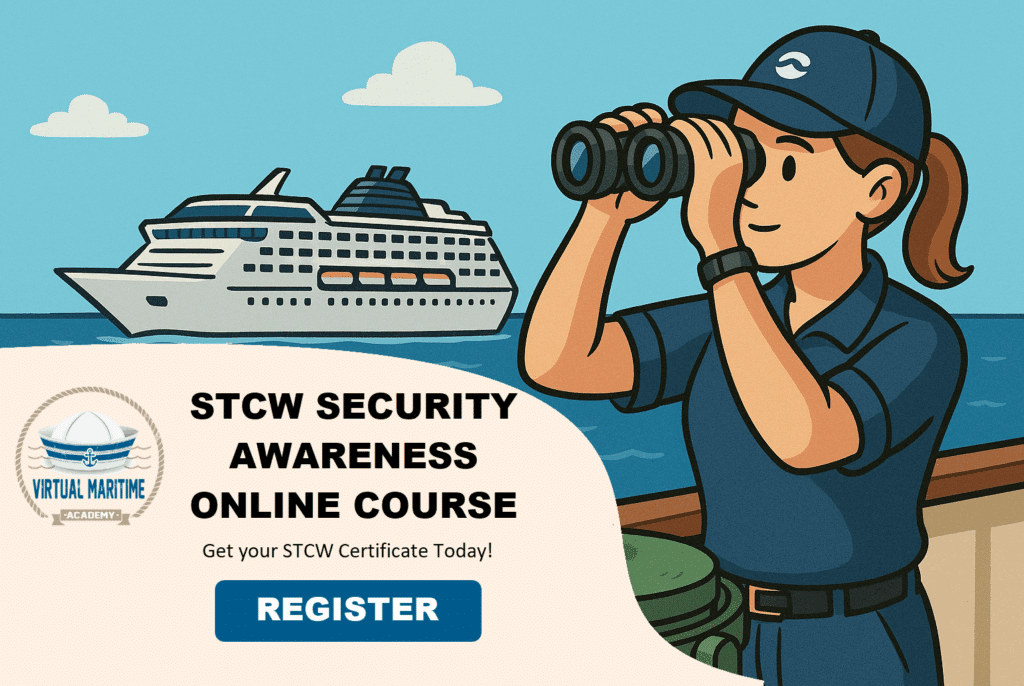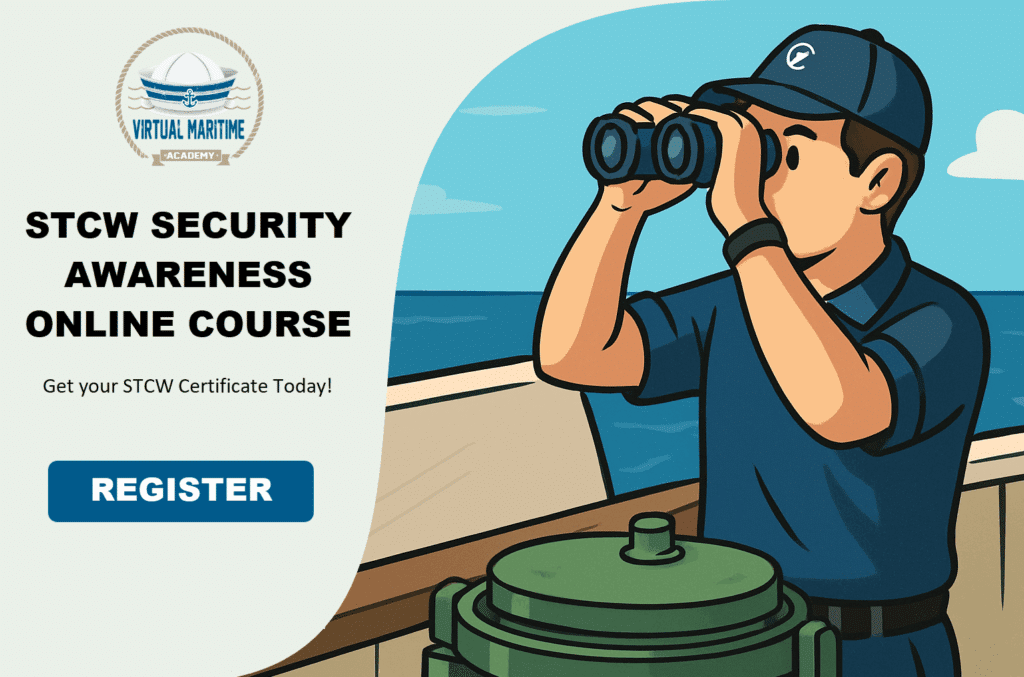Maritime security is a critical component in safeguarding the extensive and intricate network of global trade and travel. With over 90% of the world’s trade carried by sea, the maritime industry is a cornerstone of the global economy. However, this vast and vital sector faces numerous security challenges, including piracy, smuggling, human trafficking, and terrorist threats. These issues underscore the need for robust security measures and innovative solutions to protect ships, cargo, and crews from potential dangers.
In response to these pressing challenges, the maritime industry has seen significant advancements in security technologies. Among these, the Ship Security Alert System (SSAS) stands out as a vital tool designed to enhance the safety of vessels and their crew. The SSAS allows ships to send a covert alert to shore-based authorities in case of security incidents, thereby enabling a swift and targeted response to threats.
Beyond SSAS, several other cutting-edge technologies are making waves in maritime security. Automated tracking systems provide real-time data on the movement and location of vessels, ensuring continual monitoring and rapid response capabilities. AI-driven analytics offer predictive insights by analyzing vast amounts of data to identify potential security threats and vulnerabilities. Advanced surveillance systems, equipped with high-resolution cameras and sensors, enable comprehensive monitoring of maritime environments, bolstering the detection and prevention of illicit activities.
As the maritime industry continues to evolve, the integration of these advanced technologies is crucial for enhancing security measures, mitigating risks, and ensuring the safety and resilience of global maritime operations. This article delves deeper into SSAS and other emerging technologies, shedding light on their transformative impact on maritime security and their potential to address the complex challenges faced by the industry today.
Introduction to Maritime Security and Emerging Challenges
Maritime security is a cornerstone of global trade and travel, ensuring the smooth and secure movement of vessels across international waters. As the maritime industry continues to grow, safeguarding the seas has become increasingly critical. The importance of maritime security cannot be overstated—it facilitates international commerce, supports global supply chains, and ensures the safety of countless lives at sea.
One of the primary reasons maritime security is essential is that it protects the free flow of goods and services between countries. Over 90% of global trade is carried by sea, and disruptions in maritime security can have far-reaching consequences for economies worldwide. From raw materials to finished products, the secure transport of goods by sea underpins international trade and economic stability.
Furthermore, maritime security plays a pivotal role in protecting critical infrastructure, such as ports and harbors, which are integral to the functioning of global supply chains. These facilities are vital nodes in the logistics network, enabling the efficient handling and distribution of goods. Ensuring their security is critical to prevent disruptions that could affect everything from fuel supplies to food distribution.
However, several significant challenges complicate the task of maintaining maritime security. One of the foremost issues is the threat of piracy and armed robbery. Despite international efforts to curb these activities, piracy remains a persistent threat, particularly in certain high-risk areas such as the Gulf of Guinea and the waters around Somalia. Pirates armed with sophisticated weaponry can seize vessels, hold crews hostage, and disrupt maritime trade.
Another pressing challenge is the prevention of terrorism at sea. Terrorist organizations may target vessels, ports, and offshore installations, seeking to cause maximum damage and instill fear. The potential use of commercial vessels as weapons or platforms for launching attacks poses a grave threat to maritime security and requires constant vigilance and preparedness from security forces.
In addition to traditional security threats, the maritime industry must address the growing problem of cyber threats. As vessels and port operations become increasingly reliant on digital technologies, the risk of cyberattacks has risen significantly. Cybersecurity breaches can disrupt navigation systems, communication networks, and cargo handling processes, potentially leading to severe consequences. Protecting maritime infrastructure from cyber threats is a critical challenge that requires robust cybersecurity measures and constant monitoring.
Moreover, the issue of human trafficking and smuggling remains a significant concern in maritime security. Criminal networks exploit maritime routes to transport illegal goods, including drugs, weapons, and even people. Combating these illicit activities requires international cooperation, sophisticated intelligence gathering, and effective enforcement measures to intercept and dismantle smuggling operations.
The complexity of maritime security is further compounded by the vastness of the maritime domain. The sheer size of the oceans and the volume of maritime traffic make monitoring and securing these areas a daunting task. Effective maritime security necessitates the deployment of advanced technologies and coordinated efforts from multiple stakeholders, including naval forces, coast guards, and private security firms.
In recent years, geopolitical tensions and territorial disputes have also added to the challenges of maintaining maritime security. Competing claims over maritime boundaries and resources can lead to confrontations and conflicts between nations. Resolving these disputes peacefully and ensuring the security of international waters is essential for global stability and cooperation.
Given the diverse and evolving nature of maritime security threats, the industry must continually adapt and innovate to address these challenges effectively. The adoption of advanced technologies and the implementation of comprehensive security strategies are crucial for safeguarding the maritime domain. By leveraging technological advancements and fostering international collaboration, the maritime industry can navigate these challenges and ensure the continued safety and security of global trade and travel.
https://www.virtualmaritime.academy/vma-courses/
Advanced Technologies Enhancing Maritime Security
In-depth Exploration of Ship Security Alert System (SSAS) and Its Impact
Maritime security has significantly evolved with the integration of advanced technologies. One pivotal technology is the Ship Security Alert System (SSAS), mandated by the International Maritime Organization (IMO) as part of the Safety of Life at Sea (SOLAS) regulation. The SSAS is designed to enhance vessel security by providing a method for covertly raising an alert in the event of a security threat, such as piracy or armed robbery.
The SSAS functions by allowing a ship’s crew to activate a silent alarm that alerts the ship’s management company and relevant coastal authorities. This system does not alert the perpetrators, thereby avoiding escalation and affording authorities the opportunity to respond appropriately. The immediate impact of SSAS is profound, improving response times to potential threats and enhancing overall maritime safety.
Implementing SSAS across fleets has revealed several benefits. Firstly, it acts as a deterrent, discouraging piracy and criminal activities by raising the risk of rapid interdiction. Secondly, it provides a structured response mechanism that ensures timely and coordinated rescue operations. Lastly, the system enhances the confidence of shipping companies and their crew, knowing that an effective support mechanism is in place during emergencies.
Examination of Other Emerging Technologies Shaping Maritime Security
Beyond SSAS, several other advanced technologies are revolutionizing maritime security. Automated tracking systems, artificial intelligence (AI)-driven analytics, and advanced surveillance systems are at the forefront of these innovations.
Automated Tracking Systems
Automated tracking systems, such as the Automatic Identification System (AIS), are critical in providing real-time data on vessel movements. These systems use transponders to continually send and receive information, which includes vessel identification, cargo details, and navigational status. AIS data is invaluable for monitoring ship traffic, preventing collisions, and enhancing situational awareness. This level of transparency is essential for security agencies to identify and act against illicit activities such as smuggling, human trafficking, and illegal fishing.
Additionally, these systems facilitate better route planning and hazard avoidance, which are crucial for safe and secure maritime operations. By integrating automated tracking with other data sources, maritime authorities can build comprehensive surveillance networks that offer detailed insights and predictive analytics.
AI-Driven Analytics
The application of AI-driven analytics in maritime security is transforming how data is processed and interpreted. AI systems can analyze vast amounts of data from various sources, including AIS, satellite imagery, and radar, to identify suspicious patterns and anomalies. Such systems are adept at recognizing behaviors indicative of security threats, such as unplanned deviations from navigational routes or unusual loitering in restricted areas.
AI-driven analytics enable predictive policing by forecasting potential security incidents before they occur. These systems can identify emerging trends and provide actionable intelligence that allows maritime security forces to preemptively address threats. AI is also instrumental in optimizing resource allocation, ensuring that security assets are deployed where they are most needed.
Advanced Surveillance Systems
Advanced surveillance systems, incorporating high-definition cameras, thermal imaging, and radar, offer unparalleled monitoring capabilities. These technologies enable comprehensive coverage of maritime zones, ensuring that no activity goes unnoticed. High-definition cameras provide clear visuals, even in low-light conditions, while thermal imaging is beneficial for detecting hidden or camouflaged targets. Radar systems enhance the detection range, making it possible to monitor vast expanses of water.
Integrating these surveillance systems with AI and automated tracking creates a multi-layered security network that can efficiently identify and respond to threats. The deployment of unmanned aerial vehicles (UAVs) and unmanned surface vessels (USVs) equipped with these advanced surveillance tools further extends the monitoring capabilities, allowing for real-time intervention in remote areas.
In conclusion, the adoption of these advanced technologies is crucial for enhancing maritime security. The Ship Security Alert System stands as a testament to the effectiveness of targeted security solutions, while automated tracking systems, AI-driven analytics, and advanced surveillance systems collectively fortify maritime defenses. As the maritime industry continues to embrace these innovations, the safety of global trade and travel is significantly bolstered, creating a more secure maritime environment for all stakeholders.
In conclusion, maritime security remains a cornerstone of global trade and travel, addressing the ongoing and evolving challenges faced by this critical industry. The advanced technologies discussed, particularly the Ship Security Alert System (SSAS), have proven to be pivotal in enhancing the safety and security of maritime operations. SSAS, with its ability to send real-time alerts during security breaches, exemplifies the significant strides made in maritime technology, offering a robust solution to protect vessels and crew from piracy and other threats.
Beyond SSAS, the integration of automated tracking systems, AI-driven analytics, and sophisticated surveillance mechanisms further augments the security framework. These technologies collectively enhance situational awareness, streamline threat detection, and enable swift response actions. The synergy between these advanced tools underscores a proactive approach to maritime security, ensuring that the industry can adapt to emerging threats and maintain the integrity of global trade routes.
As maritime security continues to advance, the commitment to leveraging innovative technologies will be crucial. Stakeholders, including shipping companies, port authorities, and international regulatory bodies, must continue to collaborate, invest, and develop these cutting-edge solutions. This collaborative effort will solidify a secure and resilient maritime environment, fostering safer seas and promoting the sustainable growth of global commerce.











